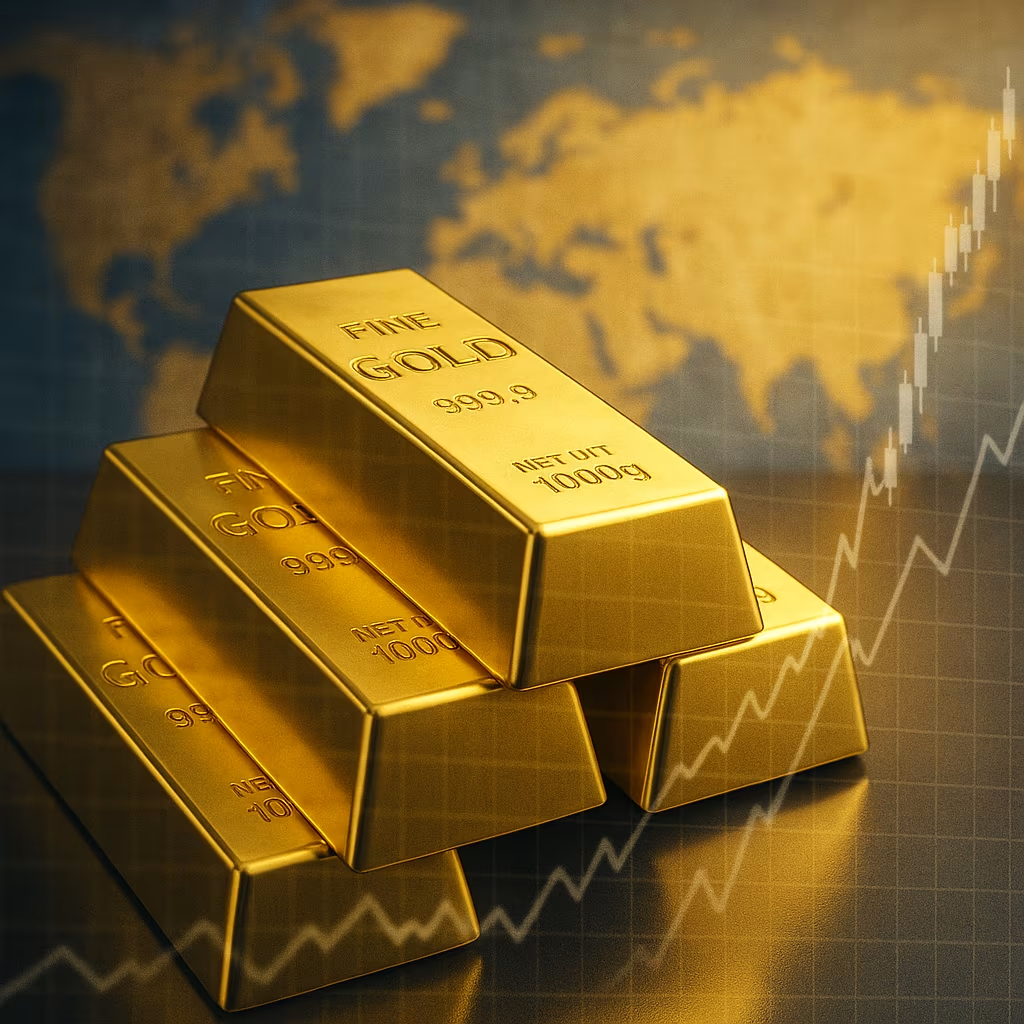Gold prices surged this week as investors worldwide moved into safe-haven assets amid heightened market volatility and growing concerns over the global economic outlook. The precious metal, often viewed as a hedge against uncertainty, is benefiting from a confluence of factors — including geopolitical tensions, fluctuating equity markets, and shifting central bank policies — that are driving demand higher.
With the U.S. dollar under pressure and government bond yields edging lower, gold’s appeal has strengthened, signaling that traders and long-term investors are looking for stability in an unpredictable environment.
A Flight to Safety
Gold has long been considered a safe-haven investment, prized for its ability to preserve value during periods of financial stress. Unlike equities or currencies, gold is not directly tied to corporate performance or political decisions, making it an attractive choice when risks rise in other markets.
This latest rally comes as stock markets face bouts of volatility, partly driven by uncertainty surrounding interest rate policies from major central banks. Investors are increasingly concerned about the potential for slower global growth, which could hurt corporate earnings and trigger further market turbulence.
Central Bank Policy in Focus
The Federal Reserve’s recent commentary has played a significant role in supporting gold prices. While inflation in the U.S. has eased from its peak, it remains above the Fed’s 2% target, creating uncertainty about the pace and timing of potential interest rate cuts. Lower rates typically reduce the opportunity cost of holding non-yielding assets like gold, making it more attractive to investors.
Similarly, other central banks — including the European Central Bank and the Bank of England — are facing delicate balancing acts between controlling inflation and supporting economic growth. This policy uncertainty has encouraged traders to diversify into gold as a safeguard against policy missteps.
Geopolitical Risks Adding Fuel
Beyond monetary policy, geopolitical tensions are adding momentum to gold’s rally. Concerns about conflicts in key regions, trade disputes, and energy market disruptions have made investors more cautious about holding riskier assets. Historically, gold prices tend to rise during times of geopolitical instability, as it is perceived as a universally accepted store of value.
Weakness in the U.S. Dollar
Another driver of gold’s strength is the recent weakness in the U.S. dollar. The dollar’s value often moves inversely to gold prices because a cheaper dollar makes gold less expensive for buyers using other currencies, thereby boosting demand.
With the dollar slipping against major peers such as the euro and yen, international demand for gold has increased, adding upward pressure to prices.
Investor Behavior and Market Trends
Exchange-traded funds (ETFs) backed by physical gold have reported inflows in recent weeks, reflecting growing investor appetite for the metal. Retail demand for gold coins and bars has also picked up, particularly in Asia and the Middle East, where gold plays a traditional role in both investment and cultural practices.
Meanwhile, futures markets are pricing in expectations of continued strength in gold, with traders betting that economic headwinds will keep demand elevated.
Gold’s Role as an Inflation Hedge
Gold is also attracting buyers who view it as a hedge against inflation. Although price pressures have eased somewhat, many investors remain wary of a potential resurgence, especially if energy prices climb or supply chain disruptions return. In such scenarios, gold’s reputation as a store of purchasing power over time makes it a logical addition to diversified portfolios.
Risks to the Rally
While sentiment is currently bullish, analysts caution that gold’s rally could face headwinds. A sudden rebound in the U.S. dollar or a sharp increase in Treasury yields could make the metal less appealing. Additionally, if central banks maintain higher interest rates for longer than expected, the opportunity cost of holding gold could increase, dampening demand.
Short-term corrections are also possible if investors decide to take profits after recent gains. However, many market watchers believe that the broader upward trend will hold as long as uncertainty remains elevated.
Long-Term Outlook
The long-term case for gold remains compelling for many institutional and retail investors. Central banks themselves have been significant buyers of gold over the past two years, adding to their reserves as part of efforts to diversify away from the U.S. dollar and other fiat currencies.
If global economic conditions remain volatile — with ongoing political tensions, fluctuating commodity prices, and uneven growth across major economies — gold is likely to retain its appeal as a defensive asset.
Gold’s recent surge underscores its enduring role as a safe-haven asset in times of uncertainty. With market volatility persisting, central bank policies in flux, and geopolitical risks on the rise, investors are once again turning to the precious metal for stability.
While short-term fluctuations are inevitable, the underlying drivers of gold demand suggest that it will remain a key part of diversified investment strategies in the months ahead.





